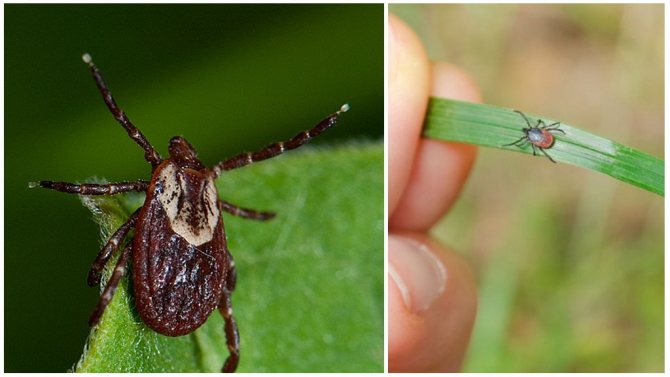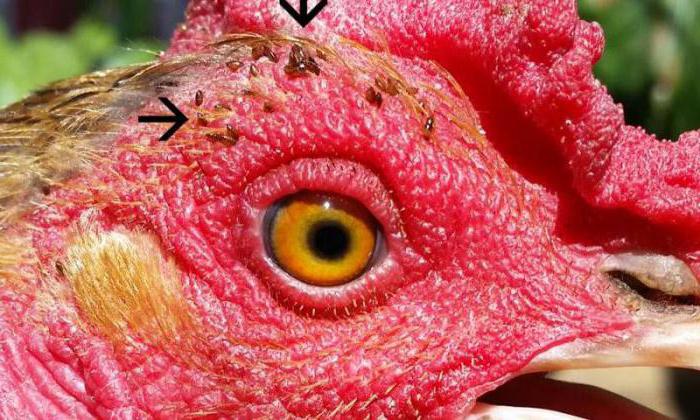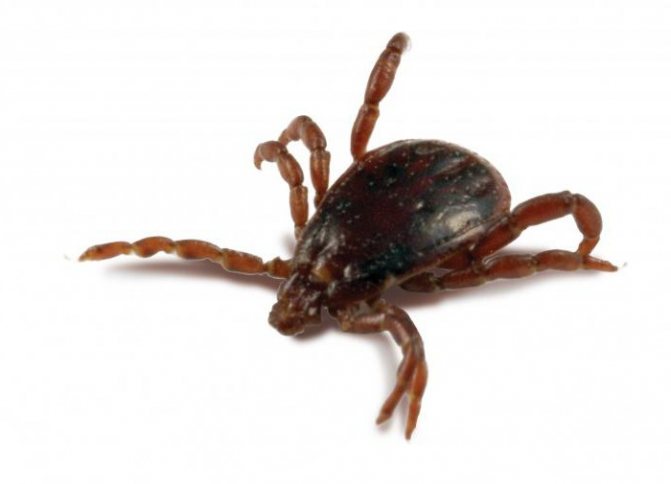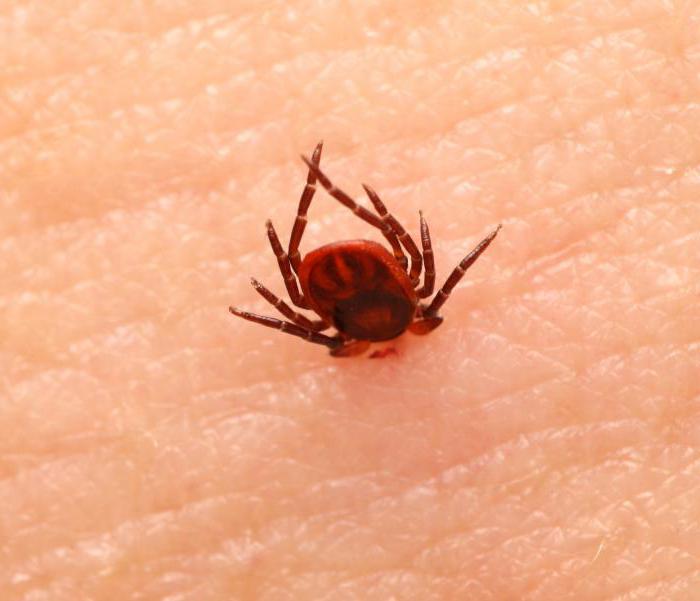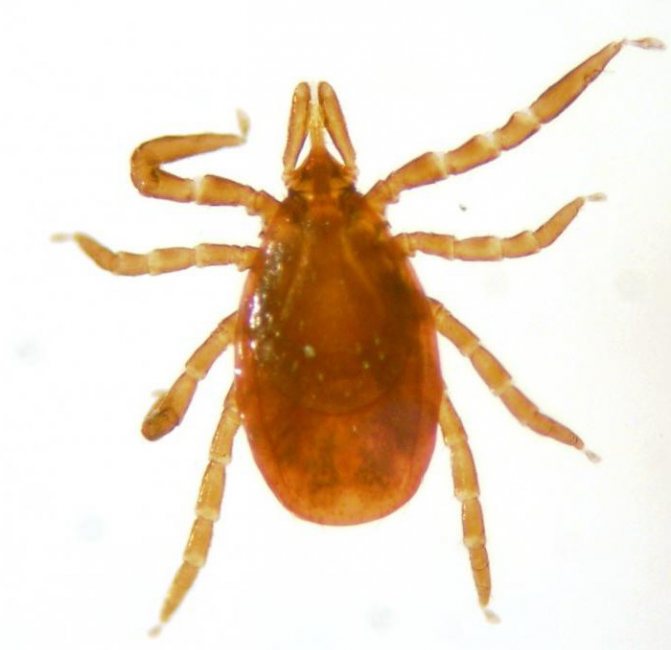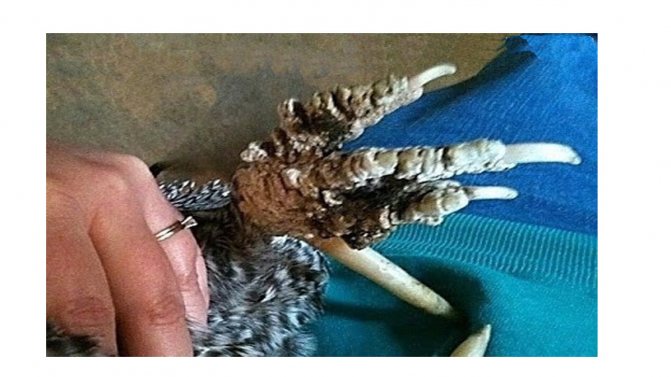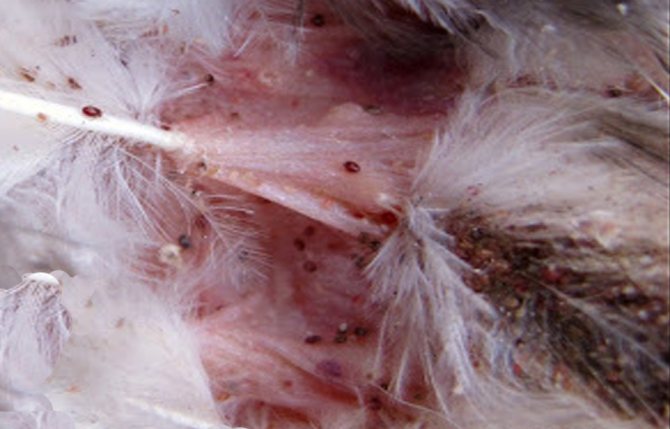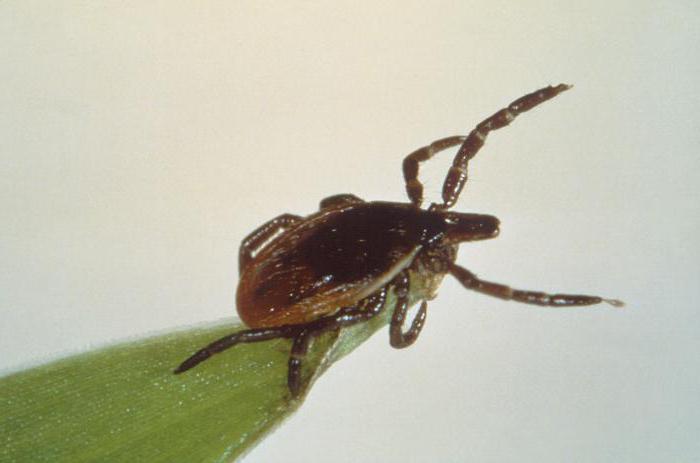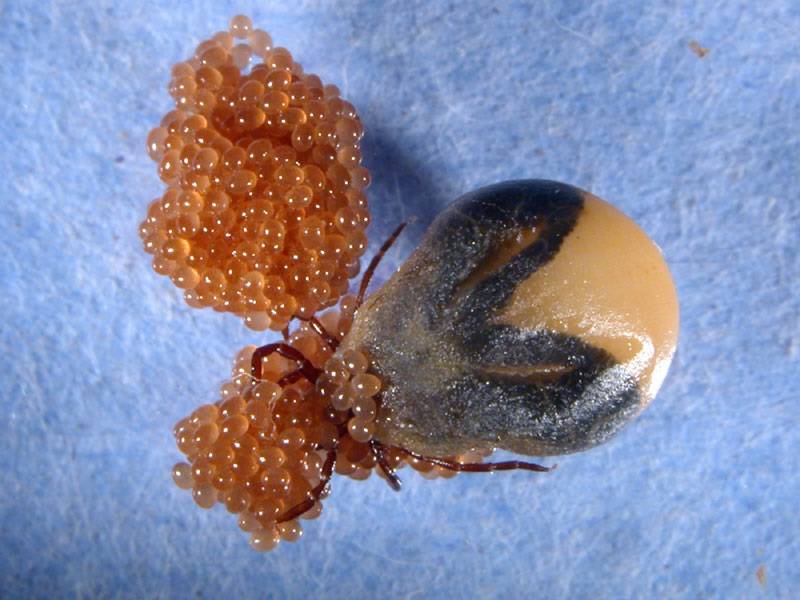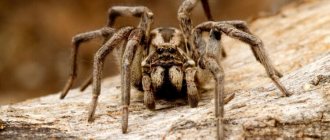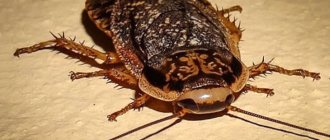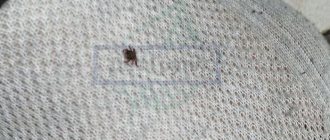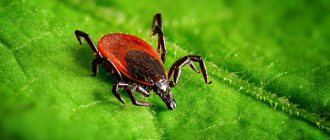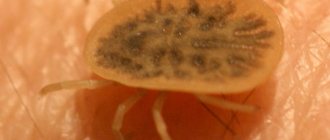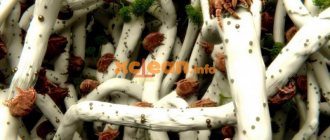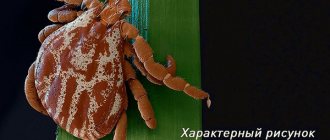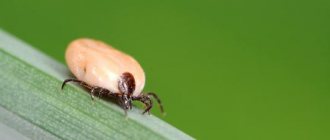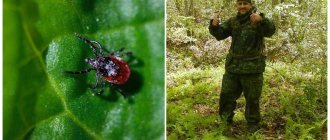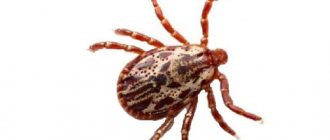Ticks are a huge group of arachnids. There are about 25 thousand species of them. They differ in size, color, structure. At the sight of them, most people are disgusted, they have associations associated with bites, which can be dangerous for a person. Involuntarily the question arises as to why mites are needed in nature, for something they exist. Or maybe they are actually beneficial. It's hard to believe in this.
The importance of ticks in nature and human life
There is hardly a place on Earth where ticks do not live. This group of arachnids is one of the most numerous, numbering about 25 thousand species. They are different in structure, lifestyle, habitat, size and color, among them are plant pests, blood-sucking specimens and parasites. Humanity has long been waging an irreconcilable war with them, but still it must be admitted that the importance of ticks in nature is enormous.
The greatest danger to humans is represented by ixodid ticks, which feed on blood and are carriers of dangerous diseases. At the same time, these arachnids are irreplaceable in the ecosystem, since they play the role of a regulator of natural selection. Weak animals die after being bitten by such a tick, giving way to the strongest, and those, in turn, develop immunity. Thus, in nature, the numerical balance of individuals is maintained.
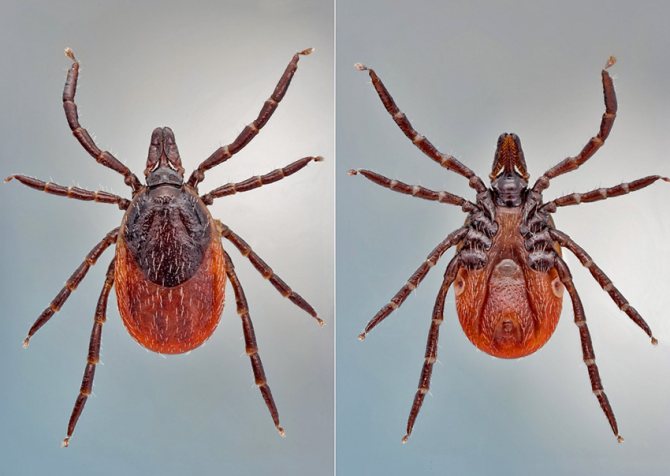
Here is a vivid example of how an obvious benefit to nature at the same time has an extremely negative effect on humans. Therefore, the question of the benefits and harms of ticks needs to be considered in more detail, because the answer to it is completely ambiguous.
Are ticks useful?
The concept of "benefit", of course, is inseparable from human culture, therefore, despite the prejudice of people towards ticks, the latter provide tangible help in various industries.
- Agriculture: The damage done by ticks to agriculture is enormous, but, in fairness, it should be noted that the benefits are very significant.
- The overwhelming majority of mites are small saprophages, they process organic matter, thereby increasing soil fertility, and in agriculture this is one of the priority tasks.
- Predatory ticks are used to combat arthropod pests in agriculture, such as the spider mite, which can destroy up to 70% of the crop.
- Ticks are able to cleanse plants infected with spores of parasitic fungi.
- Certain types of mites are used to make certain types of cheese.
- For scientific medicine, enzymes contained in the saliva of arachnids, the so-called anticagulants, which prevent blood clotting, are of interest. In addition, antigens are actively being investigated, contributing to the enhanced formation of antibodies and other protective reactions in the victim's body.
In addition, ticks are an important link in the ecological system, helping to make natural selection and maintain balance, and they are also part of the food chain, for example, ixodid ticks are eagerly eaten by birds and frogs.
Ways to fight
For the destruction of ectoparasites and plant pests, special means have been developed. The representatives of the class of arachnids are weakly affected by insecticidal preparations developed for insects.The fight against ticks is carried out with acaricidal and insectoacarid agents.
One way to kill parasites is to wash it in hot water. At what temperature do ticks die? It is enough to place them in an environment with a temperature above 40, or better 60. Washing at a maximum rate of 90-95 with a 100% guarantee will relieve you of dust, scabies, demodectic and other types of mites.
The impact of negative temperatures is also detrimental to them. Even being in a state of winter diapause, ticks die in winters with little snow. Items that cannot be hot worked can be frozen.
What harm do they do?
The most dangerous for both humans and animals are ixodid ticks. And in the first place among them is the taiga (encephalitis) tick, which is a carrier of encephalitis, borreliosis, ehrlichiosis and other equally dangerous diseases. Since these arthropods feed exclusively on blood, infection occurs after a bite, viruses and pathogens of terrible diseases enter the victim's body along with saliva.


In addition to blood-sucking arachnids, human health can be threatened by subcutaneous, scabies and other mites, which are carriers of such unpleasant diseases as scabies, dermatitis and others.
Not only parasitic mites harm humans, but also, at first glance, completely harmless saprophages. Moreover, the possibilities of these arthropods are practically endless, due to their tiny size, extraordinary vitality and enormous fertility. There are no inaccessible places for them, they are in gardens, vegetable gardens, in reservoirs, in food, on beds, in sofas, in a word - everywhere.
- Flour mite - feeds on flour, grain, cereals and is capable of destroying many foods.
- Dust mite - eats the remnants of the epidermis, dust, is often the culprit of asthma in people, especially in allergy sufferers.
- Ear mite - it affects mainly cats and dogs, experiencing incredible itching, combing the ears into the blood.
- The spider mite is a thunderstorm for gardeners and indoor plant lovers. If you do not take action in time, it can completely destroy the plants.
Why are mites needed in nature? Apparently, then, in order to occupy a clearly assigned ecological niche and to fulfill their direct responsibilities that have appeared in the process of evolution.
The onset of spring entails not only excellent weather, outdoor picnics and walks, but also such an unpleasant phenomenon as the activation of ticks. Ticks are small arthropods from the order of arachnids that have lived on the planet for several million years. Since they live mainly in the soil, the period of their activity falls on the time when it warms up to +5 degrees. Many of the members of this subclass are carriers of serious diseases such as tick-borne typhus, encephalitis and borreliosis. The number of species of ticks affects and is recorded by about 50 thousand, but the researchers divide the subclass itself into three groups: hay makers, parisitoform and acarimorphic ticks.
Elimination of ticks on animals
Manual collection of ticks.
Collect and destroy ixodid ticks from milkmaid cows, and from horses - riding and grooms during the cleaning of animals. When collecting ticks, one should take into account the places of their favorite localization. For example, Rhipicephalus bursa mites are more often attached to sheep in the ears, on the dewlap, in the groins and under the tail; Boophilus calcaratus - in cattle, mainly on the skin of the udder, scrotum, perineum, groin and dewlap; mites of the genus Dermacentor - in horses in the intermaxillary space and at the base of the mane.
Ticks collected from animals should not be crushed by hand in order to avoid infection with some dangerous diseases; they are placed in a jar of kerosene. This method has limited application due to its high labor intensity and low labor productivity, as well as low efficiency (in most cases, it is possible to detect and collect only well-fed female ticks).
Destruction of ticks by chemical means
- a widely used method in a production environment. To combat ticks on the body of animals, use the wet method (bathing, spraying, wiping), and in the winter period of the year - the dry method (treatment of the skin with dusts of acaricidal agents). The most effective and widely used in the fight against ixodids is the wet method of anti-mite treatment of livestock.
In the form of solutions, emulsions and suspensions, the following acaricides are prescribed for treating the skin of animals (with an interval of 6-7 days):
1) 1% chlorophos solution - 1-3 liters of solution for each animal;
2) a suspension of sevin (0.75-1%) - 1-3 liters for each animal;
3) 3% polychloropinene emulsion (only for young cattle) - 1.5-3 liters of emulsion for each animal (rarely used);
4) 2% emulsion of the SK-9 preparation (dairy cows and slaughter animals cannot be processed) - up to 3 liters (depending on the age and weight of the animal);
5) 1% emulsion of trichlorometaphos-3 (only young cattle can be processed) - 1-2 liters of emulsion for each animal (no later than 60 days before slaughter);
6) sodium arsenite with different concentrations of arsenous anhydride (A2O3) for different types of animals (0.16% for bathing cattle, 0.18% for bathing sheep and 0.24% for rubbing horses).
Sometimes a 0.5% solution of chlorophos in a 0.1% solution of caustic alkali is used to destroy ixodides on animals.
Of the ixodid ticks, representatives of the genus Ixodes are the most resistant to acaricidal agents, and ticks of the genus Boophilus (especially larvae) are the least resistant. The rest of the ixoids occupy an intermediate position. In ticks of the same genus, males die faster from acaricides, as well as hungry ticks (at all stages of development).
Bathing animals in bathtubs
characterized by high efficiency. Animals are bathed in the warm season. In veterinary practice, stationary baths (baths-pools) and portable (metal, wooden and tarpaulin) are used. The most widespread in collective and state farms are stationary baths-pools, arranged on a flat dry area, away from roads and buildings. They are trenches with a concrete bottom and walls. Dimensions of a typical bath for bathing cattle: length at the bottom 7 m, length at the waterline (liquid level in the bath) 14 m, width at the bottom 0.6 m, width at the waterline 1 m, depth from the bottom to the liquid level 1.85 m, the height of the boards above the waterline is 0.5 m. The entrance platform is arranged at an angle of 45 ° (sliding), and the exit ladder - at an angle of 20 ° (5 m in length). The length of the entrance corridor is 3-5 m, the width is 0.8-1 m. A cemented platform adjoins the outlet side of the bath, along which the liquid flowing from the animals enters the bath. On the side of the bath there is a sump connected to the bath by a pipeline with a valve. Cattle pens are arranged before entering and exiting the bath. This bath is designed for approximately 20 thousand liters of acaricidal fluid. You can also bathe sheep in it.
The level of the liquid in the bath is measured with a water gauge, and the length and width of the bath are measured with a tape measure. A few days before the mass bathing, the good quality of emulsions or solutions of acaricides is checked on a small group of low-value animals. Young animals and weak animals are bathed separately. Animals should be drunk before bathing. You cannot bathe animals in rainy weather and during hot hours of the day.
After bathing 300-600 head of cattle, an emulsion or solution of an acaricidal preparation is added to the bath to the initial volume. Change the acaricidal liquid and remove contaminants from the bath after bathing 2500-3000 animals. Of domestic animals, it is most convenient to bathe sheep (Fig. 68). Pregnant cows, ewes, sows and young animals under 6 months of age are not bathed, but carefully sprayed with acaricidal preparations.In order to mechanize the bathing of sheep, farms use the Dokuchaev bath with a tipping platform.


The treated animals are placed in ventilated rooms or pens, protected from sunlight and wind. At present, hand bathing of animals is of limited use due to its high labor intensity and low labor productivity.
Spraying and rubbing animals
used in farms with a small livestock population, in the absence of baths, which is often the case in the central and northern regions of the country, as well as for the destruction of ixodid ticks in pregnant and weak animals and in young animals up to six months of age. For spraying and rubbing, veterinary workers successfully use solutions, emulsions and suspensions of the above preparations.
It is convenient to deacarize large animals (cattle, horses, camels) in shower chambers (automatic supply of acaricide). Often, animals are sprayed on fenced areas using machines (DUK, LSD-2, VMOK-2, EMSOZh, etc.). During processing, animals are fixed in a split or in a machine.
Hand sprayers (hydraulic controllers of different systems, etc.), as well as hand rubbing of animals, are of limited use due to their low productivity. After the treatment of the skin with acaricides, before milking in cows (as well as in mares), the udders are washed with water. Until the skin is completely dry, animals are not driven out to pasture.
People working with dust must always wear rubber or tarpaulin gloves, goggles, and gauze bandages over their nose and mouth. After the end of the dusting of the animals, the residues of dust are carefully removed from the ground or from the floor, and the udders of dairy cows are washed with soap.
Types of ticks
For many, "ticks" are only those that live in the forest and bite animals and people. But in nature there is a huge number of ticks, divided into species and differing in nutrition and lifestyle. We will now consider some types of ticks. The classification of ticks distinguishes three independent orders.
- Hay mites are an arthropod species found in the tropics and subtropics. The name comes from the structure of the hind legs, which, with their long and massiveness, resemble mowers. The mite itself reaches a size of up to 3 mm and is considered one of the largest among its fellows. Its head is aligned with the chest, forming a single, separated from the belly, part. The diet of such mites includes fungal spores, pollen and other, smaller insects.
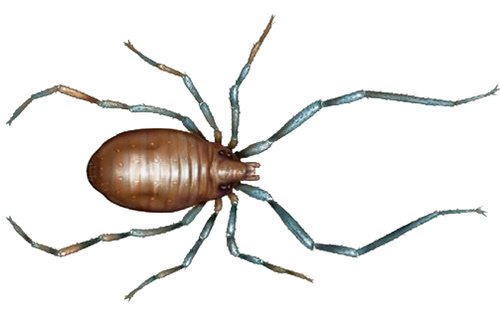

- Parisitoform mites are the most dangerous species, including parasites of vertebrates, predators, saprotrophs (organisms that serve to destroy the remains of living beings). It is these ticks that are carriers of diseases, in most cases leading to disability or death.
- Acarimorph mites - this largest group includes about 15 thousand species, half of which parasitize vertebrates. This explains their diet - skin, hair, feathers. The size is extremely small, usually does not exceed 0.3 mm, however, not only the head, but also the abdomen is divided into segments. This group also includes disease carriers, but in smaller numbers.
In addition to the three main and collective groups by which scientists classify ticks, there are many other species. Let's consider the most common:
- Ixodid ticks in most cases are carriers of encephalitis. Particular activity occurs in May-July, insects live in grass or bushes and it is from vegetation that they get to humans. Moving from below, the tick is looking for a suitable place with thin skin, most often it is the wrists, neck, head.
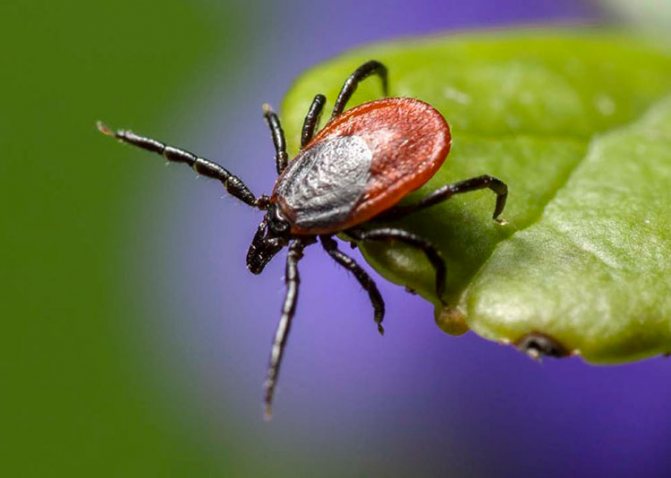

- Argas mites differ from other species in that they hunt all year round. They live in dark and hard-to-reach places such as nests, caves and various crevasses. In case of a lack of blood consumed, argas mites hibernate.However, only half an hour is enough for them to fully saturate with blood, and only a minute to infect a victim with a serious illness.


- Subcutaneous mites live under the human skin, as their name suggests. They develop and live under the skin for a long time, until they are removed by feeding on dead cells. Acne, itching and severe redness occur at the site of the affected areas. Infection occurs from carriers of the disease through towels, touch and personal hygiene items.
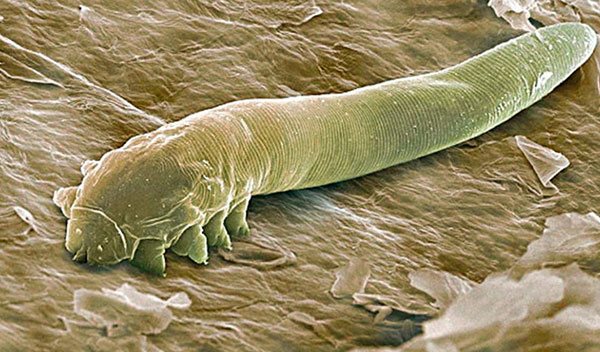

- Scabies mites can move from animal to person, causing a disease such as scabies. Infection from other people through household items, especially bed and hairbrush, is also common.
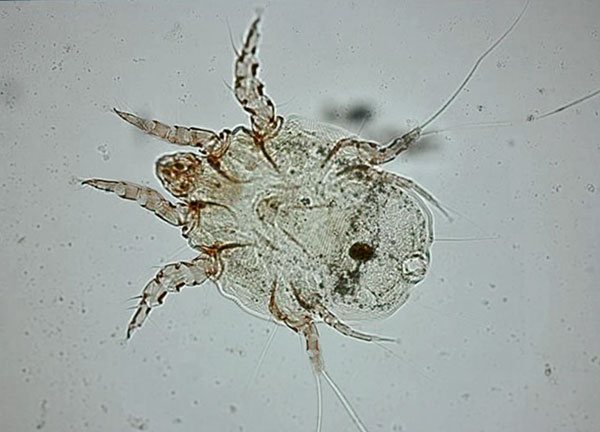

- Bed dust mites live in pillows, blankets and mattresses, feed on dust and exfoliated particles of dead epidermis. They do not feed on human blood, they are not able to bite. It is impossible to see dust mites with the naked eye, they are microscopic. Very often they are confused with bed bugs that feed on human blood.
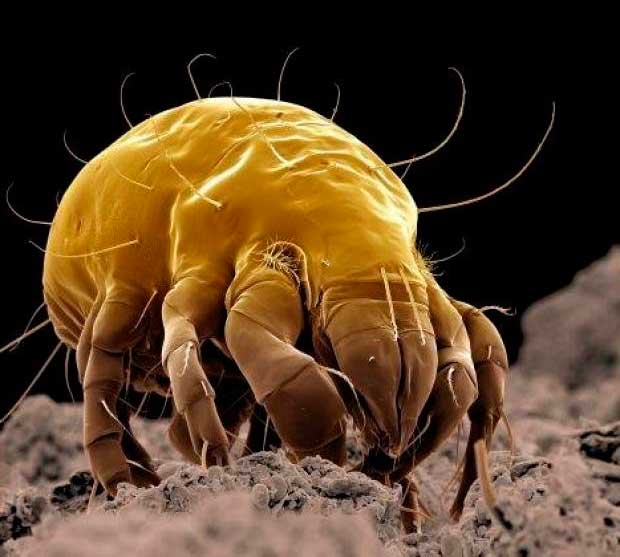

- Spider mites live on plants, feed on their sap and entangle them with their cobwebs. Plants wither and die if measures are not taken in time.
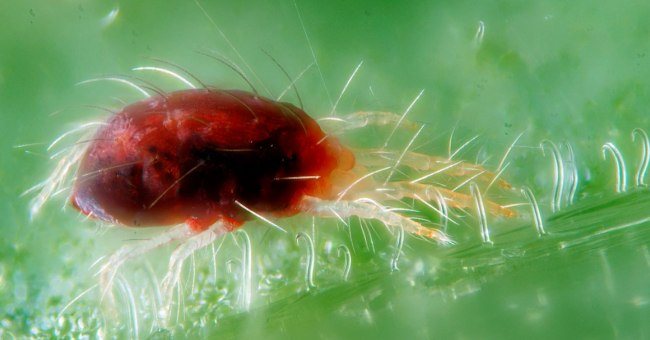

Argasidae, or soft mites - family Argasidae
Armored mites have four different stages in their life cycle - eggs, which are laid by adult females, larva, nymph and imago - adults. The larva, when hatched from the egg, has six walking legs, although otherwise it resembles an adult. This fact allows us to suggest that arachnids, which include ticks, and insects previously had one common ancestor.
The larvae are also blood-sucking, after receiving blood from the vertebrate host, they molt into the nymphal stage and already have eight legs. Nymphs drink blood again and molt into the next and final stage - an adult, which also has eight walking legs.
Females of armored mites, when they are born, begin to look for prey.
A characteristic feature of this family of parasites is the fact that each stage of the tick is fed solely.
The time it takes to complete the entire life cycle, after which ticks die, can vary from a year in tropical regions to more than three years in cold climates, where certain stages of the cycle can enter diapause, especially in winter, until hosts are available again. The habitat plays an essential role in the life cycle of these insects.
As already noted, ticks of the ixodid family are exclusively blood-sucking parasites, and many people know what a tick of this species looks like. However, only females feed on blood and, in addition to vital needs, they use this biological fluid to procreate.
Only after receiving the necessary portion of blood in the body of the female will the eggs begin to ripen, which the male will fertilize later, which is necessary for reproduction. As for the male ticks - they absolutely do not need blood, their mouth apparatus is not even adapted for feeding in this way - this, by the way, is a very interesting characteristic of this species.
With their rudimentary lips, the males lick the sap of plants, and so they live. As a rule, the life of males is about half that of females, and in some species it is several weeks, after which they die. Their task is to fertilize the female, and how long they will live is still a secondary issue for nature.
The structure of the mouth apparatus of the female tick is clearly visible from above upon close examination. There are three visible components: the two outer connected parts are highly movable tentacles. Between them are paired chelicerae, which protect the rod-shaped central structure, which is called the hypostome.
The tentacles move laterally, thereby sinking into the host's skin. The rough hypostome has many coracoid projections over the entire surface.This is a structure that plunges directly into the bite wound during feeding, like a fish hook hooks onto the edges of the wound with its protrusions. Thus, stretching the hypostome in the opposite direction is practically impossible.
This phenomenon prevents the attached tick from being easily removed. After all, everyone knows how many times it happens when the little body comes off when removed, and the head remains sucked anyway. In addition, most armored mites secrete a cementitious substance produced by the salivary glands, which literally adheres to the parasite at the feeding site. The cement is dissolved after feeding is complete.
There are two channels inside the hypostome. According to the first, saliva is injected into the wound when the tick bites the victim, and according to the second, blood is sucked from the wound into the digestive system. The saliva of the parasite contains pain relievers and anti-clotting agents. Thus, the owner may absolutely not feel the moment of the bite, when the blood moves unhindered along the narrow channel.
Carapace mites look for a host with interesting behavior called "quests". Tick questing is a whole process that can be watched with interest for a long time, especially during the tick season. First of all, parasites crawl very slowly, so they are not able to crawl onto tall branches of trees, but they still have to crawl up the stalks of grass or branches of bushes, from where it is better to spy out, or rather, feel the future victim.
After taking the standby position, there is a long waiting period. As soon as the tick senses that potential hosts are appearing somewhere nearby, the parasite takes a typical pose with its front legs extended. Certain excretions and human actions, such as carbon dioxide, as well as heat and movement, serve as incentives for questing. It is thanks to these substances that ticks "see" their prey for several tens of meters, and if the wind is favorable, then several hundred meters.
Ticks do not know how to jump, which, apparently, they regret very much, therefore, in order to get on their owner, he must pass in close proximity. At this moment, the tick literally stands on its hind legs, and the rest clings to human clothing or animal hair.
Carapace mites can stay on the body of their host for a long period of time. This period ranges from a few days to several weeks, depending on factors such as life stage, host type and tick species.
To bite, the parasite needs to find a convenient place for this, as a rule, these are softer tissues rich in blood vessels. Moreover, the blood vessel, preferably larger, should be closer to the skin surface. The parasite finds it and begins the process of excision of the upper layers of the skin - i.e. bites. The total time spent on saturation can be up to a day.
The outer surface, or cuticle, of tough mites is able to stretch to accommodate more blood and significantly. This structure allows you to drink a lot of blood. The total weight of blood consumed can be 200-600 times higher than the hungry body weight of the tick - as much as it can fit into the stretching body. By the way, there are cases when ticks simply burst from the drunk volume and they died.
We suggest that you familiarize yourself with Smear for infections in women as they say
Attitude towards the owner
The life activity of armored mites may differ from species to species. First of all, this is expressed in the number of permanent and intermediate hosts, which ensures the survival of the parasite in the external environment.
Some ticks feed on the blood of only one host during all three stages of their life cycle. These mites are called single-host mites.This type of parasite lives on the same host during the larval and nymphal stages, until they become adults. The females then leave their host after feeding to lay a batch of eggs.
Other mites feed on the blood of two hosts during their life and are called two-host mites. This type of tick feeds on and remains on the first host during the larval and nymphal stages of life, and then falls and attaches to another host and becomes an adult on it, for the final intake of blood. The adult female then falls down after feeding to lay eggs.
Finally, many ticks feed on three different hosts, one at each stage of life, and were appropriately named three-host. These mites drop and attach to a new host at every stage of life, until finally the adult females lay a batch of eggs.
The life stages of soft ticks are known to few, and not everyone knows what a tick of this species looks like. In the first stage, the larvae emerge from the egg, take a portion of the blood from the host and molt into the first stage of the nymph. Unlike hard ticks, many soft parasites go through several nymphal stages, gradually increasing in size, up to the last molt - the adult stage. Some members of the species pass through seven nymphal molts before they become adults.
Soft ticks feed several times during each stage of life, and females lay several small batches of eggs between blood samples during their lifetime. The time it takes to complete its entire life cycle is generally much longer than that of hard ticks and lasts for several years.
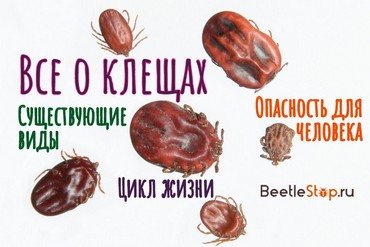

The structure of the mouth apparatus of argas mites is divided into three visible components: the two connected parts located outside are highly mobile tentacles, paired chelicerae are placed between them, which protect the rod-shaped hypostome. Unlike ixodids, in this type of tick, the tentacles do not penetrate into the wound, and only the hypostome passes there. In all other respects, including feeding habits, argas mites are no different from ixodids.
Some soft mites seek out potential hosts in low-lying vegetation, but the vast majority are nesting parasites that live in closed environments such as burrows, caves, or bird nests. The attention of ticks is also attracted by the contents of the sweat glands of a potential victim, its temperature and exhaled air.
Soft mites feed for short periods of time on the host's body. The total feeding time ranges from a few minutes to several days, depending on factors such as life stage, host type and tick species.
The feeding behavior of many members of the family can be comparable to fleas or bedbugs, this is very different from ixodids. If they never break away from the bite site, first get drunk to their fill, then these can start feeding repeatedly. This nuance in feeding was established relatively recently.
In addition, the outer surface, or cuticle of soft ticks, expands, but its structure does not allow it to stretch as much as in ixodids to accommodate a large volume of blood. In general, the parasite is able to drink blood weighing only 5-10 times higher than its own.
Due to their small size and external similarity, ticks are mistakenly considered insects. In fact, they belong to the class of arachnids. Their body has a solid structure without division into chest and abdomen. The main difference between the species is the number of limbs; insects have 3 pairs of legs. How many legs does a tick have? He has 8 legs or 4 pairs.
Oral apparatus and nutritional features of ticks
Special devices help ticks to absorb food: chelicerae, or leg tentacles, which grind food, and pedipalps, which are used to chew food.In arthropods that feed on blood and plant juices, the limbs are modified: pedipalps have grown together and perform the function of piercing the skin or outer shells of plants, and chelicerae form a proboscis with jagged edges for secure attachment. All this is a piercing-sucking oral apparatus.
Ticks that feed on solid food (flour, seeds) have a gnawing mouth apparatus. The chelicerae are transformed into claws, and the pedipalps perform their original function of chewing.
By the way of feeding, ticks are divided into two types:
- Saprophages are individuals that feed on the remains of organic matter. This includes plant sap, rotting organic residues, millet, flour, particles of exfoliated human epidermis, as well as subcutaneous fat;
- Predators - ticks stick to vertebrates and feed on their blood. Without food, they can live up to 3 years, but nevertheless they constantly lie in wait for the victim and wait for the advantageous moment.
How does the tick stick and where does it bite most often?
The process of sucking the ixodid tick to the victim is divided into two categories: passive and active. The first implies that the tick lives in grass, bushes or near paths, where many people or animals gather. Without spending any effort, the tick, finding its future owner, sticks to it. But this happens only in those cases when a person's legs are open, because the tick pounces from below. However, clothes are not a hindrance to him - the tick makes its way up through it, finding an open area of the body.
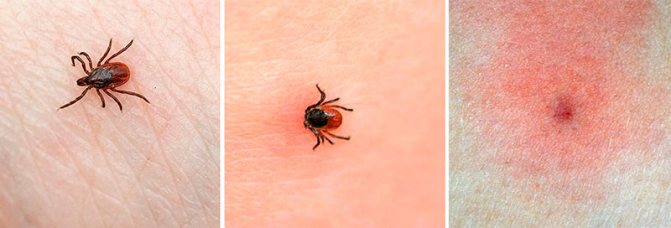

The second method of attack is active. It is built on an instinctive level, since the tick senses its prey and makes its way to it in all possible ways. Following his incredibly sharp senses, he makes his way closer to the grass, crawling onto it, and waits for the approach of a person or an animal. When the victim approaches the optimal distance, the tick, spreading forward two front legs with claws, clings to wool, skin or clothing. If the goal is lost, but the tick, driven by hunger and instinct, continues to pursue it.
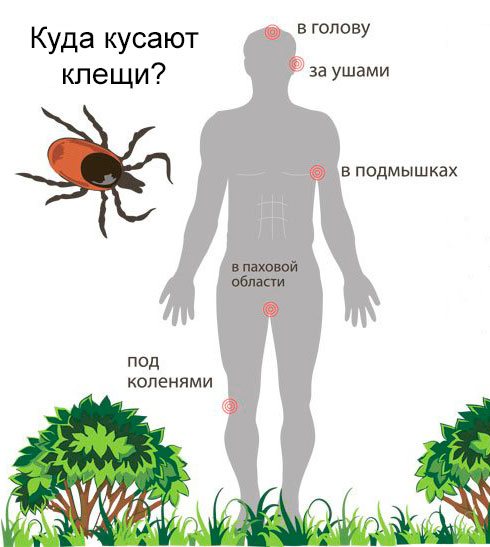

The figure shows the most favorite places where ticks bite.
The places with the thinnest and most delicate skin seem to be the most attractive for tick bites. As already mentioned, these include the neck and head. But also great attention should be paid to the examination of the groin area, armpits, chest and abdomen, because most ticks sharply feel the smell of sweat, which attracts them very much.
Tick borne diseases
Having suffered from a tick bite, it is impossible to say for sure that there will be no further serious consequences. The fact is that many representatives of this species are carriers of diseases that are terrible for humans. The most serious are encephalitis, Lyme disease, ehrlichiosis. Tick-borne fever, tularemia, babesiosis, and spotted fever are also common. All diseases carried by ticks entail an extremely serious condition, often ending in disability and an extremely long rehabilitation period, and sometimes death.
Lyme disease - symptoms, consequences, treatment
Lyme disease (tick-borne borreliosis) is triggered by a tick bite, which is a carrier of the spirochete and is called ixodic. Infection occurs after the saliva of an infected arachnid enters a wound in the skin. There are also cases when a person himself, while scratching the skin, rubs the infection from a crushed tick. The main symptom after injury is a red spot, the surface of which rises above other areas of the skin, with a white center, which then turns into a crust and scar.
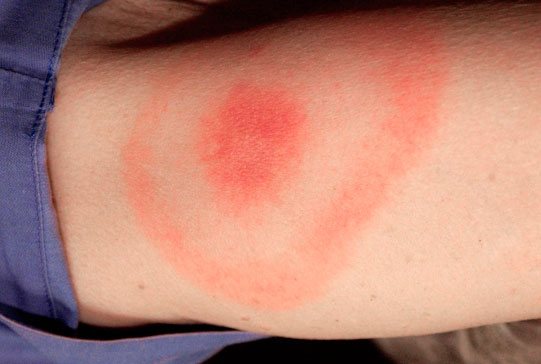

Already after 1.5 months, disorders of the nervous system, cardiac apparatus and joints appear. Paralysis, insomnia, depression, and hearing loss are common. The outcome of this disease is usually not fatal, however, exposure to the heart can be serious.For the treatment of Lyme disease, specialists prescribe antibiotics (from 2 weeks), in more severe cases, they are administered intravenously.
Encephalitis - symptoms, consequences, treatment
Encephalitis is one of the most serious diseases, which is an acute disorder in the brain. Its cause lies in the immune system, which mistakenly attacks its own tissues. Encephalitis mites live in many forests in Europe and Russia, but refusal to visit them will not surely save you from illness - mites often hide in branches, wool.
Surprisingly, even after drinking the milk of an infected cow or goat, a weak body can contract encephalitis. The spread of the virus occurs in 1.5 weeks, affecting the gray matter of the brain, accompanied by convulsions, paralysis of either certain muscles or entire limbs. After the defeat of the whole brain, severe headaches, vomiting, and loss of consciousness are observed. The consequences are very serious - disability and, in frequent cases, death. For the treatment of encephalitis, doctors prescribe the introduction of intravenous immunoglobulin, and for prevention, antiviral drugs are required.
Dandelion Tea Uses
The secret of dandelion is that tea can be made from any part of the plant: flowers, leaves, dried roots. Moreover, even the secret of "coffee" from the roots of dandelion has been invented, which has a unique taste that is different from the taste of a traditional drink.
For "coffee" the dried roots are additionally fried in a dry frying pan. Due to heat treatment, the beneficial properties are reduced, since some vitamins are destroyed by high temperatures. Of course, such dandelion tea will not harm, but its healing power is less.
The widespread centuries-old use of dandelion tea in traditional medicine has allowed the creation of recipes that are designed to solve specific problems. The simplest way to brew a fortifying drink is no different from making any other herbal tea. Take a cup of boiled water for a tablespoon of raw materials, let it stand under the lid for 3-4 minutes and drink.
Fresh dandelion cap tea
All you need to make a drink is 2-3 handfuls of freshly picked dandelion heads. The flowers must be freed from the stems and stalks and put into a brewing container, for example, in a regular teapot. For one handful of petals, take a cup of boiling water. Pour in the raw materials and let the tea brew for 5 minutes. Strain and drink for colds, bronchitis, weakness, insomnia, decreased vitality.
Tea from young leaves
Wash 2-3 handfuls of young dandelion leaves with cold water, dry on a towel and put in a teapot. Brew with 1.5 cups of boiling water, let it brew under a lid and a warm towel. Strain, pour into cups. Add lemon or mint leaf to taste and drink as a diuretic, laxative, tonic, anti-inflammatory agent.
If you use dried leaves, then you must first grind them into crumbs. Brew at the rate of a flat tablespoon per glass
Healing flower tea
For joint pain, make a more concentrated drink. For a cup of healing tea, take five large heads together with a cup, pour a glass of cold water. Put on medium heat, after boiling simmer at low boil for about twenty minutes. Strain, squeeze the flowers. Drink a small cup of the broth 2-3 times daily before meals.
This tea is useful for joint inflammation, hormonal and digestive disorders, gastritis with low acidity, in the treatment of gynecological inflammations, liver and gall bladder diseases, to increase appetite.
Tea for removing sand from the kidneys
When deciding on the use of this remedy, be sure to consult with a urologist and do a UI.Large stones can block the ureters, which is dangerous.
For two tablespoons of dried heads and stems (or just flowers or leaves), take half a liter of cold water. Pour and place on the stove. Simmer for twenty minutes on a slow boil, strain, cool slightly to an acceptable temperature and drink immediately.
Dandelion root tea
Grind the dried root into powder or finely chop. Brew a tablespoon of raw materials with a cup of boiling water, cover with a lid. After five minutes, strain and drink with honey or lemon. Tea is useful for colds, vitamin deficiency, inflammation of the joints and muscles, cough, infections of the oral mucosa.
How to protect yourself from ticks?
There are a few simple rules that anyone can follow to avoid tick bites:
- clothing that reliably covers all parts of the body, especially arms and legs;
- headdress;
- closed and high shoes, or trousers tucked into it;
- clothes of light colors, on which it is easier to see the tick;
- treatment of open skin areas with a repellent;
- examination of yourself and loved ones every half hour;
- refusal to collect flowers, branches and plants.
Repellents
A repellent is a type of tick repellent. The spray can be sprayed not only on clothes, but also on the skin, but care must be taken that it does not erode and repeat the procedure again. Particular attention should be paid to the areas of the armpits, abdomen, neck and wrists - most often they are chosen by ticks for a bite. Of course, this remedy is not an exact guarantee that all ticks will bypass the person, but nevertheless, the use of repellents significantly reduces the likelihood of being bitten.
Acaricidal agents
These funds are the most powerful and effective. The substance used in the spray affects the nervous system of the tick, causing its limbs to go numb. But it must be remembered that acaricidal agents are extremely harmful to the skin and, moreover, they cannot be inhaled. Adults are advised to process their clothes, but in no case putting them on, wait a while for everything to dry out completely, only then put them on. One spraying with such an acaricidal spray gives an effect for about two weeks.
Insecticidal and repellent agents
This type is considered the most convenient and reliable, because it combines two agents together, which means not only repels ticks, but also paralyzes them. Convenience lies in the fact that the product is allowed to be applied to the skin and clothing. In addition, the drugs fight not only against ticks, but also against other blood-sucking insects, which also has its own benefit - mosquitoes will not bother.
Vaccination
Vaccination against tick-borne encephalitis, the most severe disease transmitted by ticks, is done so that the human immune system can recognize the virus and begin to fight it. First you need to contact a therapist who will tell you where it is best to perform this procedure.


It is important to consider that it can only be done in hospitals that are licensed to provide this type of vaccination. In case of improper storage of the drug, the effect of the vaccine is useless and sometimes dangerous. In Russia, drugs of domestic, German and Austrian production are used. The advantage of foreign vaccines is that they have much fewer contraindications and side effects.
The healing properties of dandelions
In the composition of dandelion juice, scientists have found a lot of useful substances. It contains vitamins, minerals, biologically active substances. The complex produces a wonderful cocktail that has a beneficial effect on the digestive, immune, urinary, nervous system, and prevents a number of very dangerous diseases.
The most important vitamins for health are vitamins A (retinol), C (ascorbic acid), E (tocopherol), B4 (choline), B2 (riboflafin), B1 (thiamine). They increase the strength of the capillary network, protect the heart from heart attacks and strokes, and the vessels - the formation of sclerotic plaques.In combination with minerals (iron, chromium, calcium, potassium), organic acids, bioflavonoids, they restore an inflamed, damaged liver, normalize hormonal levels, affecting the endocrine system, heal the pancreas, stomach, kidneys.
All these healing properties are fully preserved in dandelion tea. A drink rich in vitamins and nutrients will help you recover faster or feel better: more energetic, calmer, stronger.
What should I do if bitten by a tick?
If a tick is found on the skin, you should immediately contact the nearest emergency room, where they will provide first aid, and the parasite should be taken to the laboratory to find out if it is a carrier of diseases.
If there is no hospital nearby, then it is necessary, observing all the rules, to remove the tick on your own. The animal stays on the skin from half an hour to two hours, so during this time it can be detected and removed. In no case should the tick be squeezed or pulled out, only twisting will help get rid of it.
How to get a tick out?
The most effective methods for tick removal are:
- using ordinary tweezers or a clip, you can remove the tick from the skin by twisting it, but without squeezing too much;
- strong thread - it is necessary to tie it into a knot as close as possible to the tick proboscis, and then, shaking and pulling upwards, remove the animal;
- clean fingers.
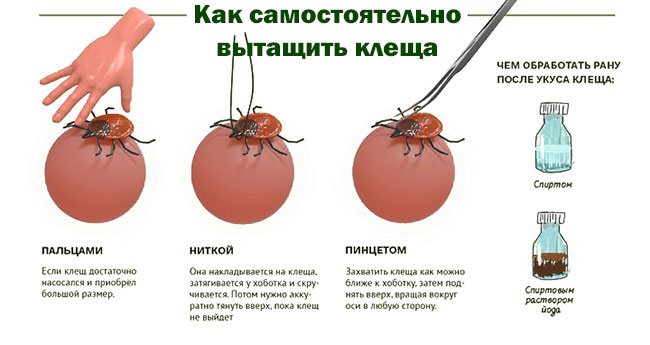

After removing the animal, the wound must be disinfected with iodine or brilliant green, and the hands must be washed again with soap.
Do I need to go to the doctor after a tick bite?
Definitely yes. If possible, you should immediately contact a specialist to remove the tick from the skin, and then to study it. Any emergency room, a surgeon on duty or an infectious disease specialist who will carry out the procedure, and also reliably disinfect the bite site, will do.
Where to take a tick for analysis?
If the victim managed to remove the tick in the hospital, then the animal must be sent to the laboratory for testing for infections. In the event that the tick is removed at home, then it is necessary to place it in a small jar along with a moistened piece of gauze or cotton wool so that it does not dry out. Be sure to take into account the fact that the tick must be alive, this is the only way to carry out the research.
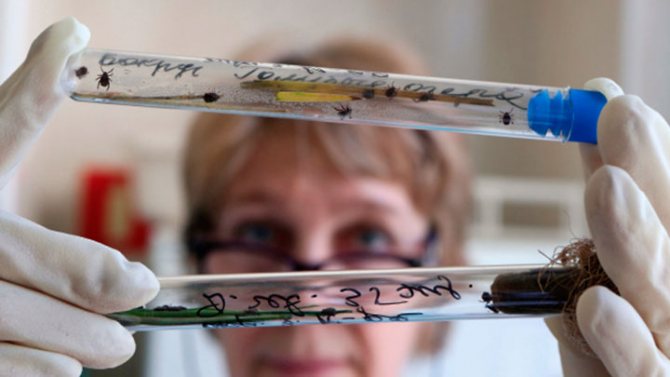

Usually, all analyzes can be carried out in a sanitary epidemiological station or special centers for epidemiology, the addresses of which can be clarified with an ambulance. We have compiled a list of where you can take a tick for analysis in Moscow and other cities of Russia.
Recipes for other ailments
If you develop atherosclerosis, gastritis, anemia, liver, kidney, gall bladder diseases, gout, a rash on the skin, prepare a healing infusion. How to cook:
- 10 g crushed roots.
- Brew 250 ml of boiling water.
- insist 2 hours.
Drink 2 tablespoons. 4 times a day half an hour before a meal.
In case of metabolic disorders, colitis, ailments of the liver, kidneys, pancreas, headaches, constipation, gout, allergies, prepare the following infusion:
- take 10 g of the roots and leaves of the plant.
- pour 400 ml of cold boiled water.
- insist 10 hours.
Take 2 tbsp. 4 times a day before meals.
Dandelion Ointment:
10 g of crushed roots and herbs, pour 50 ml of vegetable oil, leave for 10 hours. You can lubricate bedsores, burns.
Sprinkle suppurating ulcers, wounds, burns, frostbite, bedsores with dried root powder. How to do it? Grind the roots in a coffee grinder, use as directed.
Description
The length of ticks is usually 0.2-0.4 mm. The body is whole or divided into two parts that do not correspond to the cephalothorax and abdomen of the spiders - the border runs somewhat closer to the front of the body. There are usually 6 pairs of appendages, of which 4 rear pairs in most adults are legs (larvae are usually six-legged). Leg segments: pelvis, trochanter, thigh, knee, lower leg and tarsus. The tarsus (terminal segment) is usually armed with claws and pedunculated suckers.The anterior pair of appendages are chelicerae, they are pincer-shaped (gnawing) or form piercing-cutting oral structures. The second pair is pedipalps, which are also part of the complex of oral organs. In the most primitive ticks, they are free, but in a typical case they grow together at the bases and, together with chelicerai and some other parts of the body, form a "head", movably attached to the body. The free ends of the pedipalps serve as palps or grasping devices. There are usually 4 simple eyes, but the number of eyes can vary from zero to five in different species. In representatives of some families, the body is soft, with leathery chitinous integuments; in others, it is protected by hard shields or carapace.
Only a relatively small number of species are parasites or vectors of human disease, but non-parasitic forms often cause skin irritation. Most species are free-living saprophages or carnivores. Feeding on decaying organic matter, they, like earthworms, play an important role in the formation of soil humus. Some mites feed on the sap of cultivated plants and are agricultural pests.
Representatives of the Argasidae superfamily have the phenomenon of omovampirism, when a hungry individual attacks a well-fed "brother" and feeds on the blood he has drunk. Ticks can live both in grass and on low plants, as well as on various low trees.
Classification
Aceria anthocoptes (size: 50 micrometers) Member of the ixodid tick family, male (length 2 mm)
Tick phylogeny is a subject of debate. Several taxonomic schemes have been proposed to streamline their classification. For example, the third edition of A Manual of Acarology (2009) divides ticks into 6 orders, grouped into two superorders as follows:
A genetic study carried out in 2004 led to changes in the existing structure of the classification of ticks, and the superorder Parasitiformes was downgraded to the rank of order.
Another classification system postulates that the Acari subclass includes three superorders (Opilioacariformes, Parasitiformes, Acariformes), more than 350 families, about 4000 genera and more than 48 thousand species (Harvey M. S., 2002).
In 2011, the total number of described mite species was 54,617 species, including 144 fossils (Zhang et al., 2011):
- Opilioacarida Zakhvatkin, 1952 (37 species, including 2 fossils)
- Holothyrida Thon, 1905 (27 species)
- Ixodida Leach, 1815 (896 species, including 5 fossils)
- Mesostigmata G. Canestrini, 1891 (11424 species)
- Trombidiformes Reuter, 1909 (25,821 species, including 24 fossils)
- Sarcoptiformes Reuter, 1909 (16412 species including 113 fossils)
> Practical value
Ticks cause diseases of humans and domestic animals - acariasis, as well as transmit vector-borne diseases through bites, damage cultivated plants.
> Gallery
Natural enemies of ticks: who feeds on them in nature
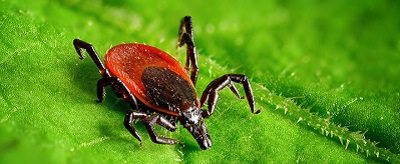

Ticks carry a number of serious diseases such as tick-borne typhus, encephalitis, borreliosis. But even such skillful pests have many enemies who eat them.
Birds
Experts say that several species of birds eat ticks:
- thrush;
- hen;
- quail;
- black grouse;
- guinea fowl;
- pincer weaver;
- starling;
- sparrow;
- drag.
Interestingly, birds are attracted to the blood in the abdomen of the arthropod. This means that the hungrier the pest, the greater its chance of survival.
Reference. The tick-eating weaver eats ticks in the process of cleansing the skin of herbivores from them. It lives in the woodlands of northern Africa, and "serves" mainly herds of large mammals. The size of no more than ten centimeters allows him to deftly maneuver, and especially keen eyesight - to find even the smallest and deeply buried parasites.
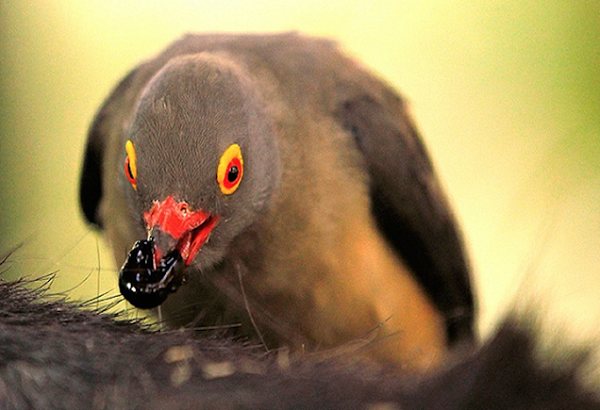

Red-billed drag
Insects
Dragonflies, ground beetles, bugs, wasps and ants eat ticks with pleasure. Spiders do not refuse them either. And riders even lay eggs in tiny parasites. Similar to the smell of tansy, ticks are repelled by the smell of formic acid that usually comes from nests. Ants sense their enemies at great distances and, upon seeing them, rush at them with the overwhelming majority of individuals. After the victory, they usually carry the victims to the anthill, where they eat. The most hostile to Arachnids are red forest ants.
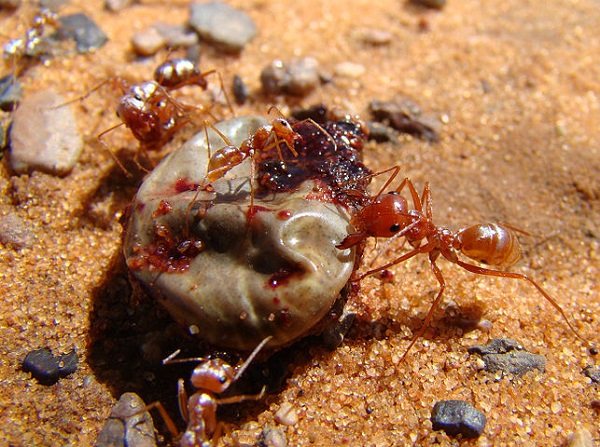

Amphibians
With amphibians, the situation is as trivial as with birds. Toads, frogs, lizards, salamanders and newts also actively kill ticks. At the same time, ticks do not avoid living near water bodies, because they like places with high humidity.


Plants
There is such a herbaceous plant as tansy, the name of which comes from the Polish "pizmo", which means "musk". Tansy gives off a strong odor that repels ticks at a distance of up to a kilometer. At the same time, the plant has beautiful yellow inflorescences, and if desired, it can be planted in the country or in the garden in order to protect yourself, and at the same time your neighbors. Some types of tansy hardly differ in appearance from chamomile.
Reference. Tansy contains toxic thujone, so it is worth limiting access to it for children.


Mold fungi
Ticks are mostly destroyed by molds at the nymph stage. Also, their spores multiply in a humid environment next to the larvae. Basically, due to this, there is no mass reproduction of these dangerous parasites.
Important! By mass processing with chemicals, or by arranging abundant burning of soil, you run the risk of destroying mushroom crops. At the same time, most of the mite larvae are located at a depth of 5 m, so fire and processing will not harm them.
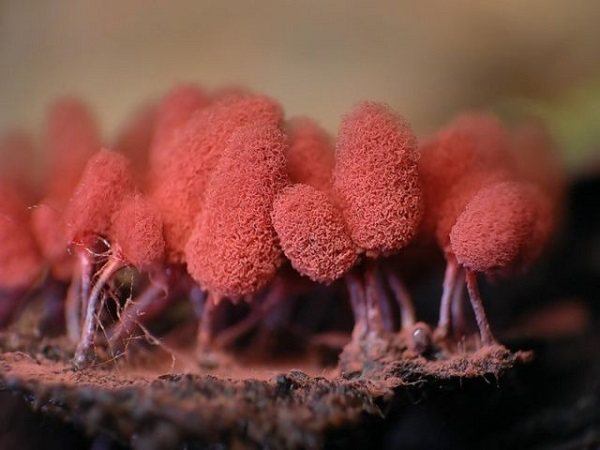

Molds under the microscope
Fitoseiulus and Ambliseius
These are predatory mites, which are used to protect crops from spider mites: common, garden, hawthorn and others. Predators can also eat the citrus red mite (Panonychus citri) and the early stages of the Bryobia lagodechiana mite.
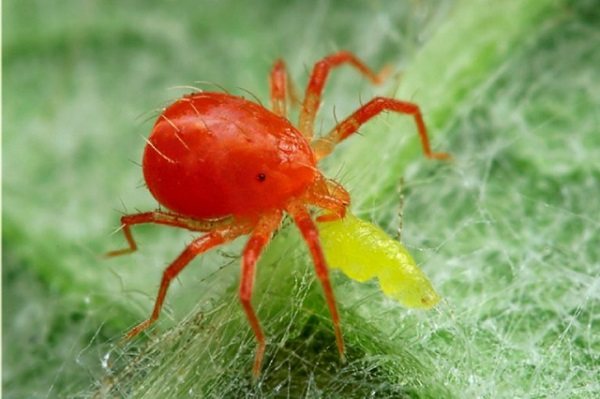

Phytoseiulus Persimilis
This video shows how Fitoseyulus eats a spider mite:
Ticks are a link in the food chain of all of the above species, and therefore, no matter how dangerous and undesirable they are, they cannot be simply exterminated, you need to adapt to them. In addition, in our time there are many ways to protect and be cured of diseases carried by this little pest.
Pasture and burrowing bloodsuckers
In search of better microclimatic conditions, some species of ticks took a simplified path and settled in the burrows of their hosts, where it is always warm enough, humid and there is food. Other species have adapted to life in forests and open spaces.
On a note
On a note
When there is a lack of water in the body, mites sink to moist substrates and absorb moisture throughout the body.
It is a common misconception that ticks fall from trees and bushes. In reality, they do not climb trees, but are found exclusively in the grassy layer. Therefore, the greatest danger is precisely the lush, tall grass in places of frequent movement of animals and people.
As for burrowing mites, they live almost exclusively only in the holes and nests of their owners, and for this reason they usually do not pose a danger to humans. These include, first of all, Argas mites, less often similar species are found among Ixodids.
The life cycles of ticks are quite complex, which is associated with the peculiarities of metamorphosis and the need to find and change hosts. At the same time, the vital activity of the same species differs significantly within different natural zones, and directly depends on the microclimatic indicators of habitats. The rhythms of life cycles are entirely dependent on the seasonal dynamics of abiotic factors, such as the length of daylight hours, humidity, temperature, etc.
On a note
The most primitive are continuous cycles, in which synchronization with seasonal rhythms is minimized. This type of ontogenesis is characteristic of species living in warm and humid tropical climates or in burrows of animals and birds, where fluctuations in microclimatic parameters are insignificant.
The most difficult cycles are typical for ticks, which need special adaptations to survive adverse environmental conditions (primarily winter temperatures).
The longest and most complex developmental cycles are characteristic of the taiga and forest European ticks, the ranges of which have shifted far to the north, much farther than the ranges of other species.Normally, for the full development of each stage of ontogenesis, it takes about 1 year, so the minimum period of development from an egg to an adult is 3 years, and the maximum is 6 years.
Adults, mainly adult and hungry females, attack large mammals and humans in April-May, and the peak of aggressiveness falls precisely in the second decade of May. At this time, they wait for their prey in tall grass in pastures, near water bodies, forest paths, in parks and squares in cities.
On a note
Often, eggs are attached to grassy vegetation, less often the female lays them directly on the fur of the animals - then the hatched larvae will not need to look for a host.
In summer, larvae hatch from the eggs laid and feed on small rodents and birds. They are tiny in size and only have 3 pairs of limbs, so they are sometimes confused with insects.
The photo below shows the tick larvae:
After feeding, the larvae look for a place for wintering: they mainly choose leaf litter and depressions in the bark of trees. There, in a state of diapause, little bloodsuckers wait out the winter. If the larva does not have time to feed before the onset of cold weather, it dies.
Sometimes the larvae have time to molt into nymphs before winter, but often also molt occurs only after emerging from diapause. Each molt is accompanied by bloodsucking.
Nymphs of ticks differ from larvae in larger sizes and the presence of one more (fourth) pair of legs. They are able to feed on larger animals such as dogs, cats, foxes, and hares.
In the spring and summer-autumn period of the 3rd year from the beginning of the life cycle, adults appear. They start feeding immediately, or they go into diapause again. Feeding is necessary for the female primarily for the maturation of eggs, so it is imperative that mating takes place before feeding. Males either do not feed at all, or they feed for a very short time, since they perform only the function of inseminators.
The most common and widespread in Russia and the CIS countries, common forest (dog) and taiga ticks carry a number of pathogens of extremely dangerous human diseases, such as:
- different forms of tick-borne encephalitis;
- tick-borne typhus;
- Lyme disease (borreliosis);
- tularemia and some others.
On a note
The tick infects its host already during sucking, when it injects saliva containing the causative agents of a particular infection under the skin. Moreover, the longer the tick is on the body, the more likely it is to get sick.
Symptoms of diseases do not appear immediately: the incubation period can last up to one month. In the case of tick-borne encephalitis, the development of the disease can proceed in different ways, however, there are general symptoms: more often there is a sharp rise in temperature, muscle and headaches. In the case of tick-borne borreliosis, a characteristic sign of infection is the appearance of the so-called migratory ring erythema - concentric rings of a reddish, brown or yellow color are formed on the skin near the wound left after a tick bite (an example is shown below in the photo).
Useful video
In this video, you will find out if ants are natural enemies of ticks, and if they can be considered as an effective remedy for parasites:
It is generally believed that ticks are found only in forests and tall grasses. It is not true. Most often you can find them in city centers, in parks and even in your own garden. Since ticks carry several very dangerous diseases, it is worth knowing how to overcome them. It turns out that there is a plant that these arachnids bypass.
For several years now, we have faced a real infestation of ticks. All thanks to the warming environment and the migration of animals. People, dogs, cats and rodents carry arachnids from forests and bushes to urban areas.One cannot turn a blind eye to the problem, since ticks are carriers of many diseases that threaten humans and animals. Experts have been calling for many years to carefully watch your whole body when you return from a walk. If we can consciously avoid forests, meadows and bushes, then in our own garden, we would like to feel safe. Fortunately, there is an effective way to keep ticks out of your yard.
Tansy is a common field plant that can be found almost everywhere. It emits a very intense, camphoric odor that repels ticks, flies and mosquitoes. In addition, the tansy is very nicely designed. The bright yellow plant is very easy to care for and pleasing to the eye. Of course, there is a place for her in the local garden. Because of its attractive appearance, tansy can be of interest to children, so care must be taken not to pull parts of the plant into their mouth. It contains a large amount of toxic thujone. But this cannot prevent them from decorating the site and warding off ticks.
Important information
After it became known what the forest tick eats and what this can lead to, you should know how to protect yourself from predatory insects, and what to do if the tick has sucked. Be sure to remember that the part that pierces the skin (proboscis) is equipped with small "spines". They are directed towards the back of the tick.
Therefore, if it is pulled along the axis, the "spines" bristle and bite even more firmly into the skin, which can lead to the separation of the tick's proboscis from the body, which can forever remain in the dermis.
To avoid this, the insect should be removed in a circular motion (unscrewed), and not simply pulled out. In this case, the spines on the proboscis will roll to the axis of rotation, while the head will not come off.
If this was not done correctly, the suction site (where the head remained) should be wiped with cotton wool moistened with alcohol, after which the head should be removed with a sterile needle like a common splinter.
What types of ticks do not benefit, but harm nature
The first signs of ticks in the garden are
- cobweb on plantings;
- growths;
- fuzzy light spots.
This indicates that the trees are under threat of destruction.
There are several types of mites, some of them are partial to conifers and shrubs, such as boxwood or pine. There are varieties of these arthropods that live only on broad-leaved trees. In nature, there are superfamilies of garden herbivorous mites
- gallic;
- brown;
- spiderweb.
They settle on fruit and berry crops.
Garden mites are small arachnids. Males are smaller than females, their length is from 0.03 mm to 10 mm. The body is divided into two parts, the abdomen and the cephalothorax. It has a round shape and is covered with bristles. The tick has two pairs of eyes. It moves with the help of 6 pairs of appendages. The juice from plants and fruits is sucked out with the help of a piercing-sucking mouth apparatus.
There are more than 1200 species of spider mites in nature. These are very small insects that lead a hidden lifestyle. Males range in size from 0.3 mm to 0.6 mm, and females up to 1 mm. You can find out the defeat of this type of mite by changing the color of the leaves on the plant, which become brown-brown. Then they curl up and fall off. This type of pest can destroy 80% of the crop. He is also a carrier of gray rot and various viral infectious diseases of agricultural plants.
Gall mites differ from other brethren in the absence of hind legs. Most often, this variety can be found on cherry plum, plum and pear. Growths are formed on the leaves of trees, where the tick lives. The affected branches are cut and burned.
The brown tick mainly settles on horticultural crops. Most often it can be seen on apple trees. The color is red-brown. This species reproduces very quickly.By the end of summer, there are many pests on the tree that dehydrate it. As a result, the apple tree dries up.
Entomophagous groups
There are several groups of natural enemies. They act in different ways, not only destroying them mechanically, but also penetrate into the body, damaging it from the inside.
Pathogenic microorganisms
These include bacteria, fungi, and viruses. Having invaded the pest's body, they cause numerous pathological processes, which ultimately lead to first weakening of the insect, and then death.
A series of preparations containing such microorganisms is produced. They are called that. microbiological
... These include "Lepidocide", "Bitoxibacillin", "Dendrobacillin". The live bacteria included in the composition are used against many lepidoptera (butterflies) and their larvae, Colorado beetles, herbivorous mites, leaf rollers, sawflies and other pests.
Carnivorous insects
To effectively deal with plant pests, you need a sufficiently large number of beneficial insects. To increase their number, it is recommended not to use chemicals on the garden plot that do not have selective activity and destroy everyone in a row. The exception is the biological preparations Iskra-Bio and.
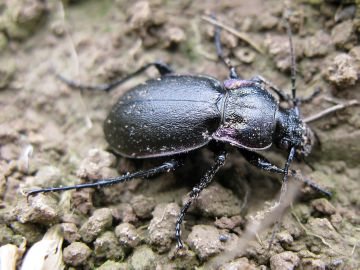

Another significant group of entomophages, which is very effective in destroying harmful insects. By attracting them to your site, you provide quite powerful protection for your plants, since voracious birds are able to get rid of a whole population of pests.
You can increase the number of birds arriving with the help of baits. For example, tits are very fond of lard, so it is enough to hang strips of unsalted product on fruit trees.
Insectivores
They are no less voracious and actively destroy pests. Some eat them whole, others suck out internal fluids. The result is always the same - the death of harmful insects.
Various spiders are most beneficial. They hang a cobweb into which a lot of harmful insects fall. And it's not just flies.
Many butterflies, moths and their larvae become food for spiders.
The benefits and harms of ticks
Ticks can be found everywhere, even in Antarctica. They live both on land and in water bodies. They can travel long distances despite their diminutive size. They are mainly found in bird nests, burrows, in residential and commercial premises. Some species even live under the skin and in the respiratory system of mammals.
But not all species are hazardous to crops or humans. There are groups of mites that provide tangible benefits.
- Exterminate plant pests.
- Recycle their remains.
- Participate in the process of soil formation.
There are types of these arthropods that are used to make certain types of cheese. But this is where the benefits of ticks in nature end.
Many groups of these representatives of arthropods lead a parasitic lifestyle. They pose a great danger to humans, carrying various infections on themselves.
- tick-borne encephalitis;
- Lyme disease;
- dermatosis;
- diphtheria;
- hepatitis, etc.
They can also cause allergies. Now the problem with these parasites is aggravated, as people are increasingly showing acarophobia.
Thus, the tick, despite the small list of positive properties, is an indispensable link in nature. It serves as an excellent food for birds, frogs, lizards, ants.
In the fight against them, biological agents are practically useless, since ticks multiply very quickly. Therefore, a person has to use chemicals to protect crops, plantations and their health.
The Biotrix sanitary service will help get rid of parasites. Experts will quickly and safely help get rid of pests. To do this, it is enough to call by phone and leave a request.You can also contact the central office or any branch of the company.
Ticks appear in March, disappear at the end of October. The peak of activity is in May-June, September-October. Favorable conditions for existence are temperatures within 20 degrees Celsius, high humidity, tall grass, thickets, bushes. The greatest danger to humans is represented by ixodid ticks, which carry borreliosis, tick-borne encephalitis. They are found in the wild, city parks, squares, near the house. One of the most pressing questions is who eats ticks in nature.
Familiar unfamiliar dandelion
A sunny, cheerful flower grows wherever there is at least a tiny piece of land. It is so tenacious that it can grow through the asphalt.
In addition to vitality, the flower has valuable medicinal properties. Leaves are harvested before flowering, in May and early June, then their strength weakens. The roots are dug up in September or early May, when they are filled with great healing power. Moreover, they are mined in the waning month, at sunset.
The dug roots are washed, then dried well, spread in a thin layer. The main thing is to choose a clean area for harvesting, near roads and industrial enterprises, the dandelion absorbs various harmful substances, when consumed, it can harm the body.
The benefits of the plant in renal colic, atherosclerosis, gout, in the treatment of skin problems - rashes, eczema, acne, bedsores, burns are noted.
This is not the end of its useful properties. Traditional healers consider its main useful property to help in the treatment of cancer.
Natural enemies
Ticks in the food chain are at the very bottom, so theoretically there are many who want to eat them. But judging by how intensively the pest control is carried out with chemicals, the number of natural enemies is clearly not enough to stop mass reproduction.
In Russia, ixodid ticks are ubiquitous; taiga forests are the most dangerous zones. Pests feed on the blood of animals, birds, people. But they themselves often become victims of birds.
Experts say that several species of birds eat ticks:
- thrush;
- hen;
- quail;
- black grouse;
- guinea fowl;
- pincer weaver;
- starling;
- sparrow;
- drag.
Enemies of ticks
The most active helpers for humans are the familiar sparrows. In the season of tick activity, birds feast, but their appetites end at some point.
Interesting!
Experts have put forward the version that birds eat ticks mainly during the day, attracted by their blood, which is in the abdomen in large quantities. It follows from this theory that hungry parasites have every chance of survival.
In the forest, blood-sucking pests are afraid of ants. They are frightened off by the smell of formic acid, which actively emanates from a large anthill. In a fight, ants against ticks always win first. When a victim is found, insects give a signal to relatives, a whole colony pounces on one arachnid.
Ticks and ants never inhabit the same territory, but active insects always find a prey several tens of meters from the anthill. The most dangerous natural enemies are large red forest ants. When fighting an arachnid, they inject poison, then drag it with them to their dwelling. The ants eat the ticks themselves, feed the cubs.
Ticks and ants
On a note!
To destroy a colony of pests, to prevent their reproduction, it is recommended to mow the grass, remove last year's foliage, twigs, and clear bushes. The soil dries up, eggs, larvae do not develop, but ants do not live in such conditions.
Among insects, there are other natural enemies of ticks in nature:
- dragonfly;
- bedbugs;
- ground beetle;
- riders.
Spiders eat blood-sucking parasites.
The life of a tick is at risk in the forest, on the shores of water bodies where amphibians live.Active exterminators include frogs, toads, lizards, newts, salamanders, chameleons.
Interesting materials:
- Greek names
How to write memorial notes for Athos correctly What should be taken into account when drawing up notes "about health" ... - Tigry lion an old Russian name Meaning of the name Tigriy Tigriy ("Tiger" (Greek)) From early childhood, Tigriy is very restless, often capricious, crying without ...
- Daniel sysoev God's law God's law. Priest Daniil Sysoev Contents PART I. FUNDAMENTALS OF ORTHODOX FAITH Two ways - 4 About faith ...
- Humanism philosophy spur The subject of philosophy is - the world as a whole The relationship of philosophy and worldview can be considered ...
Who helps in pest control
Among the varieties of this suborder of insects, there are those that live on the water surface. We often see them while relaxing by the water, without even realizing that we have a bug
A predatory and voracious mite, intensively used to combat garden and garden pests. Phytoseiulus acts in natural and artificially created plant associations as a natural regulator of the number of phytophages
Everyone has heard stories about nomadic ants that travel in giant columns, devouring all living things in their path. What are these insects and is it really that great danger they carry?
The bullet ant is a large predatory insect found in the rainforests of South and Central America. The pain from an ant bite is equal in intensity to the pain from a bullet wound, but it does not threaten a person's life, except in cases with allergy sufferers
In recent years, the study of biological diversity has sharply intensified. The assessment of biological resources also affected hoverflies, which not only actively pollinate various plants, but also significantly reduce the number of pests at a certain stage of development.
Inexperienced gardeners and gardeners often confuse these insects with pests. Meanwhile, entomophages play an important role in reducing the population of caterpillars, aphids and beetles.
Chalcids, belonging to the order of riders, play an important role in protecting crops from various pests - aphids, caterpillars and scale insects
Dragonflies are one of the most ancient insects. They have excellent eyesight and are virtuoso hunters. Reproduction of dragonflies takes place in water, where an adult fertilized female lays eggs. Dragonfly larvae are characterized by poor survival rate, since many aquatic inhabitants are not averse to feasting on them. Dragonflies exterminate insects harmful to humans
A red beetle with black dots on curved elytra, popularly known as the sun or ladybug, is our main assistant in preserving the crop - a natural enemy of all kinds of aphids that harm orchards, berry and vegetable gardens
Easily recognizable by their noticeable orange coloration, the two-spotted ladybugs are known throughout the world as uncompromising fighters against garden pests such as aphids and ticks, but the secrets of their lives are not known to everyone.
Are you wondering what kind of insect it is, which has a strange name - the bombardier beetle? Then read this article!

